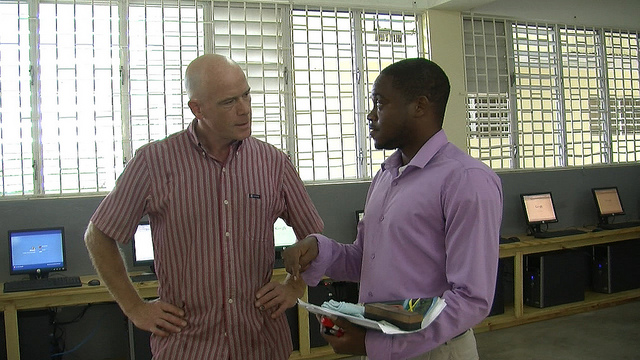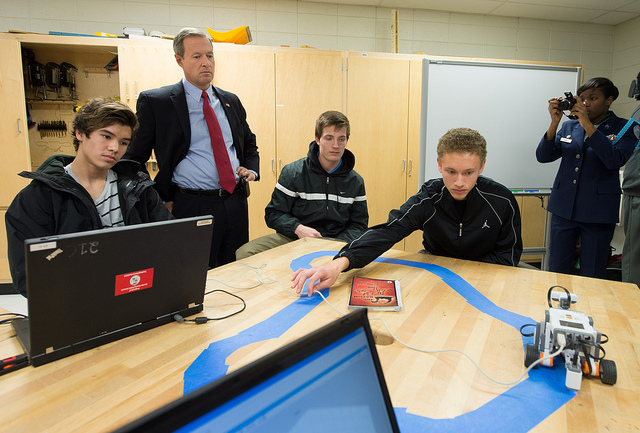Modeling Digital Citizenship in the Classroom

It’s imperative that we teach and model appropriate digital citizenship for students. With the constant use of technology, both in and out of the classroom, we have to remain vigilant to maintain safety. However, no amount of hovering is going to keep kids safe online. That’s why we must be the example for exemplary digital citizenship, every day.
Encourage Digital Literacy
Using technology to further learning can help your students appreciate the capabilities of the digital age. One great way to utilize the internet is to have your students investigate the sources of articles or headlines found online. Teaching them how to use the internet to know whether certain information is fake or real is a great exercise. Encouraging students to locate the answer online, if they are unsure, is another basic way to improve digital literacy.
Insist on Digital Etiquette
When communicating with students online address them appropriately. Additionally, expect your students to behave the same as they would in class. Correct spelling, formal greetings and closings, and polite language are all ways to be respectful online. Reward good digital etiquette much like you would good behavior in class.
Teach Digital Responsibility
Using technology in the classroom should be treated as a privilege. Learning with online resources and games is much more enjoyable than reading a book or listening to a lecture. Students who display inappropriate digital citizenship or misbehave in class should be suspended from participating in tech activities.
Model and Explain Digital Security
In her book Reinventing Writing, Vicki Davis outlines the fundamentals of responsible digital citizenship through the “9 key Ps.” Putting these practices into daily use in your classroom is a great way to model digital citizenship for your students.
Passwords
Students need to be shown how to create secure passwords and taught basic password etiquette. Educators need to adhere to password rules by not sharing their passwords or asking students to share online access.
Privacy
Teachers should make sure their classes understand how to protect their personal information. To be safe online, we must know how we can keep our addresses, emails, and phone numbers from hurting us.
Personal Information
Other personal information like your family makeup or favorite food should not be public domain. Model this behavior by keeping an appropriate distance from students. Remind them not to post anything publicly which they wouldn’t want to be shared with the entire world.
Photographs
Your pupils need to know which photos are safe to post. Are they aware of the dangers of geotagging, facial recognition, and accidental background identifiers?
Property
It’s important to teach your students the rules of copyrights and Creative Commons. They should know how to check if an image can be used freely and how to cite their sources properly.
Permission
Along with copyright rules, students should learn how to request authorization to use others’ work. They also need to know how to cite items appropriately.
Protection
Your students should understand the dangers of operating online. Make sure they are aware of the risk posed by viruses, scams, phishing, and malware. Children need to be cognizant of the danger of identity theft online.
Professionalism
Educators should explain the difference between professional and personal communication online. While you should only use proper digital etiquette in the classroom setting, make sure students understand the distinction. Teaching your pupils proper ‘netiquette’ is fundamental to digital citizenship.
Personal Brand
Explain and display how anything we share online travels across the globe and lives forever. Your students need to decide on what they want the world to see and understand that nothing online can ever be erased entirely. Do your students understand their digital footprints?
Combat Cyberbullying
In making your students responsible digital citizens, you instill in them the understanding that the online world is real. It isn’t a place where they can go and say anything without repercussions. This idea is especially important to prevent cyberbullying.
Cyberbullies feel like the anonymity the internet grants them allows them to be cruel or unfeeling. In modeling appropriate digital citizenship, you show your students that their digital footprint is indelible. Talk to your students about the ramifications of being a cyberbully. Discuss age-appropriate cases and their resolutions.
Let your students know there are consequences for bullying, in real life and online. Also, let them know there is no shame in being the target of a cyberbully. Encourage students to talk to you safely, without judgment.
Modeling digital citizenship is an ongoing process. As an educator, you have to continually engage with your students about online safety and appropriate behavior. Set the right example for them in class and during online interactions. The best example is a constant example.
How do you model digital citizenship? What resources do you find useful for teaching safe online practices? Let us know!




